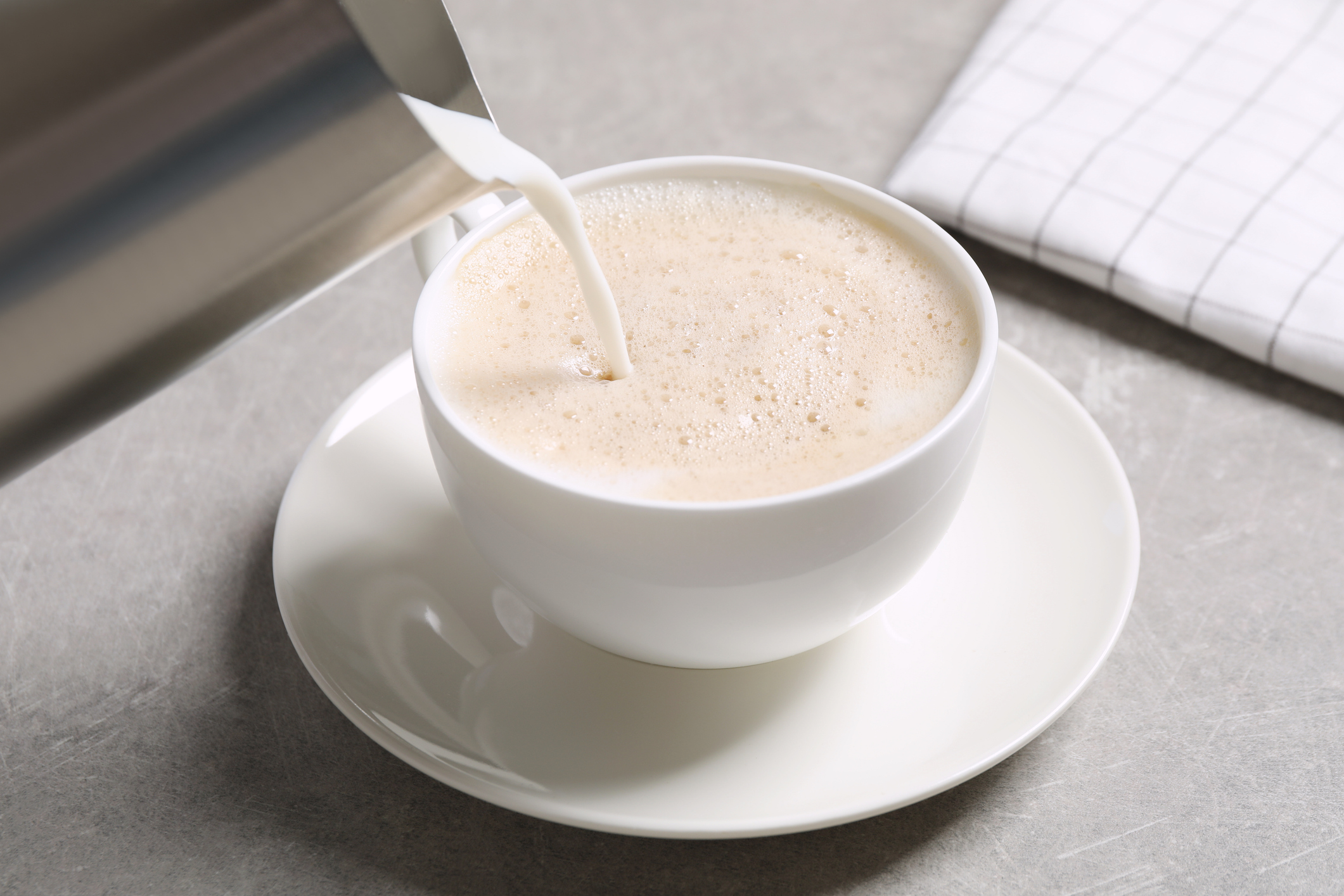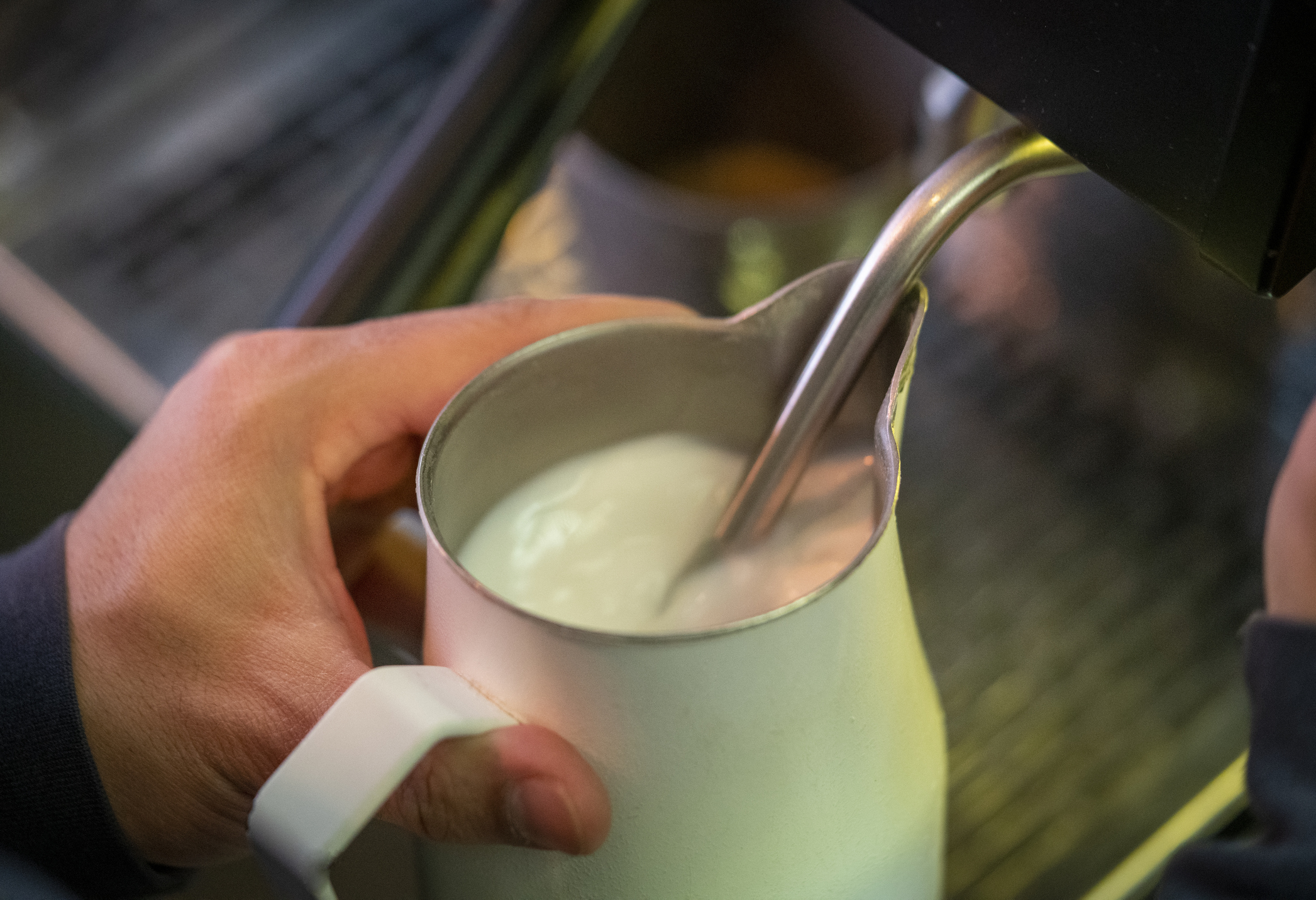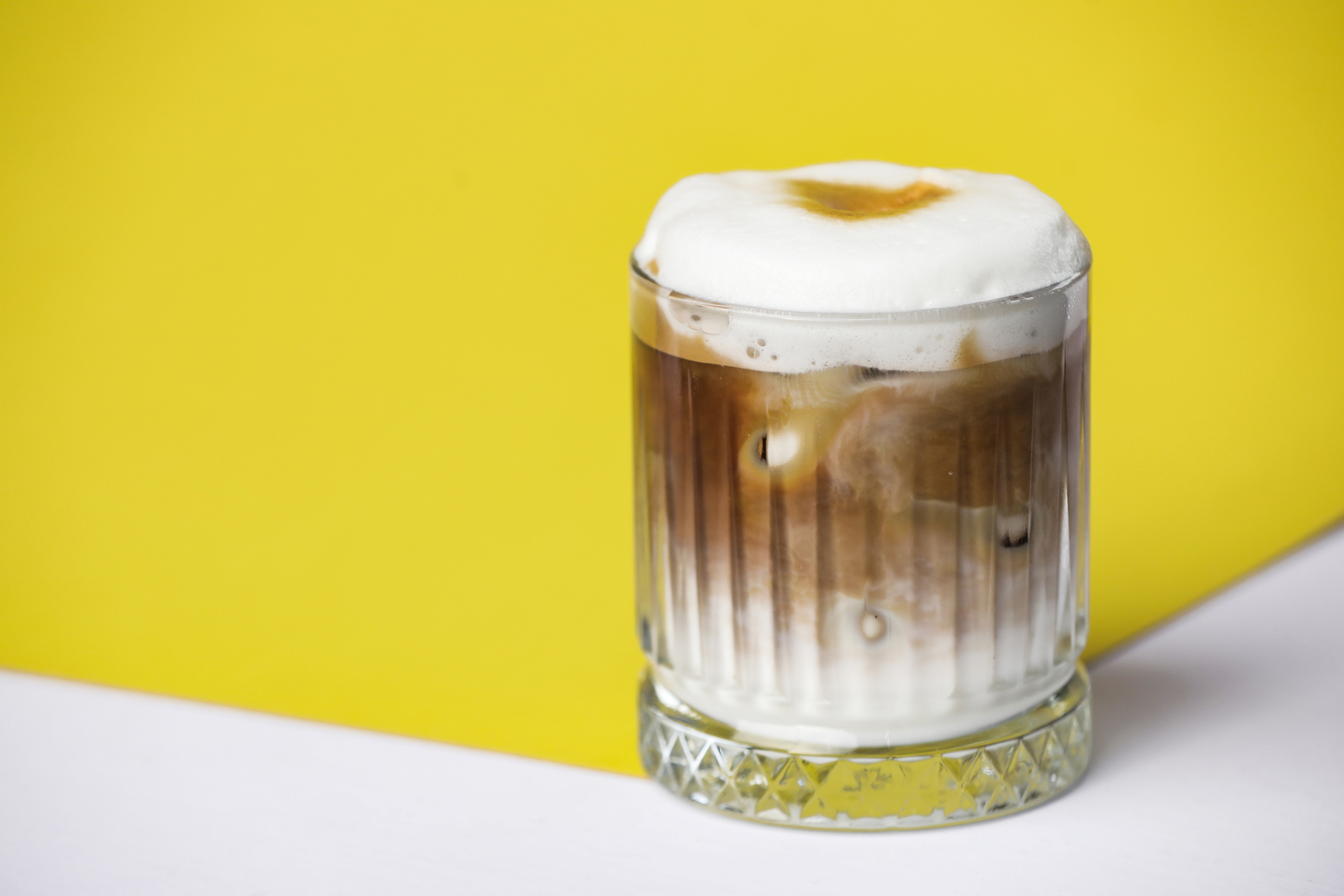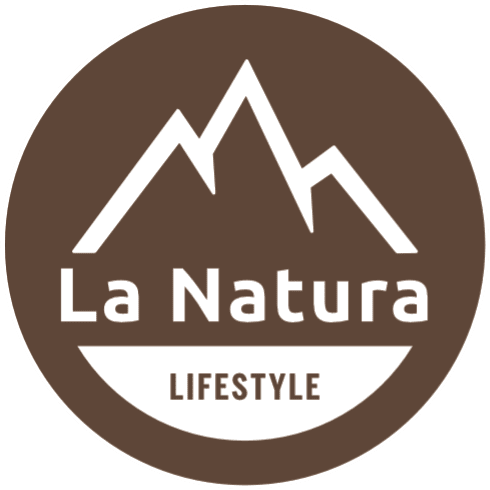Do you dream of indulging in a rich, creamy latte like the ones you get at your favorite coffee shop, but dairy just isn't on the menu for you? Don't worry, creating a barista-worthy latte at home with non-dairy milk alternatives is absolutely achievable! This guide is here to be your roadmap to crafting those perfect lattes, bursting with flavor and texture, without a drop of dairy in sight.
We'll delve into the science of latte magic, exploring how protein and fat contribute to that luxurious foam you crave. Then, we'll dive deep into the world of non-dairy milk options, helping you navigate the best choices to achieve a truly delicious and satisfying latte experience, right in your own kitchen. So, grab your favorite non-dairy milk, and let's unlock the secrets to crafting incredible homemade lattes!

The Science Behind Perfect Latte Foam
Let's dive into what makes latte foam so irresistible! Understanding these factors will make choosing the right milk alternative even easier:
Protein: The Backbone of Your Foam
Imagine the proteins in milk as a microscopic construction crew, building the foundation for your latte's luxurious foam. When heated and agitated by a frother, these proteins unfold and interact with each other, creating a web-like structure that traps tiny air bubbles. The type and amount of protein in different milks significantly impact how well they froth and the texture of the resulting foam.
- Casein: This is the superstar protein in milk when it comes to frothing. Casein proteins are like the sturdy beams in your foam's scaffolding. When heated, they denature (unfold) and become sticky, clinging to each other and air bubbles to create a stable, dense foam. Milk with a higher casein content will typically produce a thicker, creamier microfoam, ideal for intricate latte art designs.
- Whey: While not the main player in frothing, whey proteins also contribute to the overall texture. Whey proteins are more soluble and heat-sensitive than casein. They help distribute fat throughout the milk and contribute to a smooth, velvety mouthfeel in the final latte.
- Plant-Based Protein: Plant-based milks often have a different protein profile compared to dairy milk. While some plant-based proteins can contribute to foaming, they generally don't perform as well as casein. This is why some plant-based milks require special "barista blends" with added ingredients or techniques to achieve a good froth.
Fat: The Magic Ingredient for Creamy Perfection
Fat in milk isn't just about adding richness, it's crucial for creating that smooth, velvety dream foam! Think of fat molecules as tiny marbles filling the spaces between the air bubbles created by proteins. These fat molecules help prevent the air bubbles from popping or coalescing (forming larger bubbles), resulting in a smooth, creamy texture.
- Milk Fat Content: The amount of fat in milk significantly impacts how it froths. Milks with higher fat content, like whole milk, can create a denser, creamier microfoam compared to skim milk, which has a lighter, airier texture.
- Fat Type: The type of fat in milk also plays a role. Saturated fats, like those found in whole milk, tend to create a more stable and creamy foam compared to unsaturated fats found in some plant-based milks.

Frothing: Your Key to Latte Perfection
Transforming milk into that luxurious, airy foam is essential for a true barista-style latte. While high-end coffee machines often have built-in steamers, don't worry if you don't have one! That's where the magic of milk frothers comes in.
Frothers come in all shapes and sizes, from simple handheld whisks to premium electric models with temperature control and automatic settings. They're an affordable way to achieve amazing latte textures at home. While frothers won't heat your milk to the same extent as a steamer, they still do a fantastic job whipping air into the milk. This creates the beautiful microfoam or a lighter, fluffier texture that defines a great latte. Plus, a little heat from the stovetop or microwave can easily bring your milk up to the perfect serving temperature.
Why Froth Matters
Frothed milk isn't just about looks! Airy, textured milk adds a luxuriously creamy mouthfeel to your latte. It changes the way you experience the flavors and allows for beautiful latte art if you're feeling adventurous.
Temperature: The Sweet Spot
Did you know that milk naturally gets sweeter as you heat it? This is why a perfectly steamed latte is so delicious! But be careful – overheat your milk, and you'll lose that sweetness and end up with a burnt taste. The ideal temperature range for frothing milk is 140-155 degrees Fahrenheit (60-68 Celsius) for the perfect blend of sweetness, optimal foaminess, and a drink you can enjoy right away.

Exploring Milk Alternatives for Your Dream Latte
Let's delve into the world of milk options, understanding how each one behaves and what factors influence their frothing performance:
Soy Milk: The Reliable Pioneer
Soy milk's protein content helps it create a decent foam, making it especially convenient if you always have it on hand. Expect some air bubbles, though they may become large and slightly less stable ("macro bubbles"). Some brands also include added oils to enhance creaminess.
- Pro: Readily available, with protein for foam structure.
- Con: Has a distinct flavor, and foam may be less stable than other options.
Oat Milk: Creamy and Trendy
Oat milk is the darling of modern cafes thanks to its natural sweetness, creamy texture, and ability to froth beautifully. Look for "barista blends" that are specifically formulated to produce luxurious microfoam perfect for latte art.
- Pro: Creamy, sweet, and froths beautifully (especially barista blends).
- Con: Regular oat milk might lack the ideal composition for optimal foam.
Almond Milk: Light and Nutty
Almond milk's subtle nuttiness and lighter consistency make it a popular choice. Frothing success varies greatly, as naturally occurring protein and fat content can be low. Many brands use added thickeners and vegetable oils to improve the results.
- Pro: Adds a touch of nuttiness, versatile, and widely available.
- Con: Frothing success depends on the brand, additives may be undesireable.
Rice Milk: Not Ideal for Lattes
With very low protein and fat, rice milk simply won't create the foam desired for a latte. This thin beverage is better suited for other uses.
- Pro: Refreshing, good for those with nut or soy allergies.
- Con: Lacks the components (protein/fat) needed for frothing.
Coconut Milk: A Flavor Adventure
Coconut milk froths surprisingly well due to its higher fat content. However, be aware that the intense coconut flavor will dramatically change your latte's taste profile.
- Pro: Froths well, adding unique tropical notes and creaminess.
- Con: Strong coconut flavor that may overpower certain coffees.
Pea Milk: The Intriguing Newcomer
Pea milk shows promise with higher protein and fat than other alternatives. This suggests good frothing potential, although performance may vary across brands or as the formulation develops.
- Pro: Neutral flavor and good protein/fat content for potential frothing.
- Con: Still new, so availability and frothing results may be inconsistent.

Upgrade Your Lattes with La Natura Coffee
The world of milk alternatives opens up exciting possibilities for your latte creations! Whether you crave oat milk's creamy sweetness, prefer soy milk's reliability, or enjoy the unique flavors of a coconut milk latte, the perfect milk for you is out there! Experiment, have fun, and discover your favorite flavor combinations.
To truly elevate your lattes, pair your milk discoveries with the rich, ethically sourced flavors of La Natura Coffee capsules or pods. Their commitment to quality means your lattes will taste as incredible as they look. Let your creativity flow, and if you're searching for even more latte inspiration or tips, be sure to explore.
